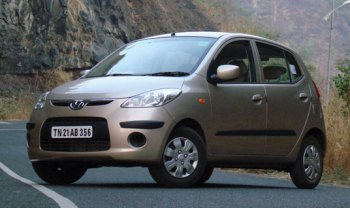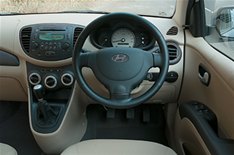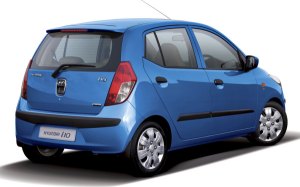| Published
on 26
Jan
2008 |
All rights reserved.
|
|
|
 Competent alone is no longer enough
these days. We want cars really feeling innovative and characterful...
Competent alone is no longer enough
these days. We want cars really feeling innovative and characterful...
Long-time readers may
notice
that AutoZine usually rate Korean cars lower than in other motoring
publications. Undoubtedly, nowadays Korean cars are mostly up to world
standards, no matter in mechanicals or quality. Some of them, such as
Kia Cee'd, even match their best Western or Japanese rivals. However,
one thing stops the Korean cars from getting the highest recognition by
AutoZine: they are so lack of innovative ideas ! While they follow the
trend and industrial standards closely, Korean car manufacturers never
showed an ability to invent new concept and technology. They always
play safe, thus fail to impress car enthusiasts. From the view point of
AutoZine, this is a deadly sin.
So here comes another competent but hardly innovative Korean small car,
Hyundai i10. Based on the same platform of the 3.5-year-old Kia
Picanto, the i10 gets a series of predictable improvements. Its design
is more modern, if quite conservative. Its packaging is higher quality,
especially the interior. The dashboard is made of better plastics to
keep up with competitors. The two-tone light color scheme is more
cheerful than the dark environment in its aging Kia cousin. The
console-mounted gearshift follows the trend set by Fiat Panda, easing
gearshift effort while releasing more room for cup holders. Although it
is 40 mm lower overall than the outgoing Atoz, it still stands 1550 mm
above the ground, so headroom is aplenty. The slightly longer wheelbase
provides adequate legroom for rear passengers. Everything fits the
latest industrial norms.
 Higher quality and light color make
this cabin a good place, yet it breaks no new ground...
Higher quality and light color make
this cabin a good place, yet it breaks no new ground...
The same 1.1-liter sohc 3-valve-per-cylinder engine from
Picanto
generates 69 horsepower and propels the i10 from 0-60 mph in a relaxing
14 seconds. It is not bad as long as you keep it in town. Once you ask
more from it on motorway, it gets noisy and reluctant. Satisfied to be
an econo car, i10 has no plan to introduce a high-performance engine
like Fiat's 100hp 1.4 16V or Renault's 100hp 1.2 TCE. However, it will
offer a 1.1-liter 3-cylinder turbo diesel engine with 75 hp output
later.
The handling and ride from the conventional MacPherson strut and
torsion-beam suspensions is competent rather than remarkable. Body roll
is well checked, but the narrow tires do not generate very high grip,
thus keen drivers can easily run it into understeer. The electric power
steering feels vague in the straight ahead but gets better at locks.
Ride quality is not as good as Fiat Panda or Renault Twingo on rough
surfaces, but overall speaking it is not bad.
As usual, the best part of Hyundai i10 is its price. Produced in India
allows it to undercut most rivals. Nevertheless, it is by no means as
cheap as Tata Nano. Ridiculously, that Indian car is far more
innovative than the Hyundai.
 For the first time in history, we are
interested in an Indian-built car, but that is Tata Nano instead of
this one.
For the first time in history, we are
interested in an Indian-built car, but that is Tata Nano instead of
this one. |
Verdict:    |
|